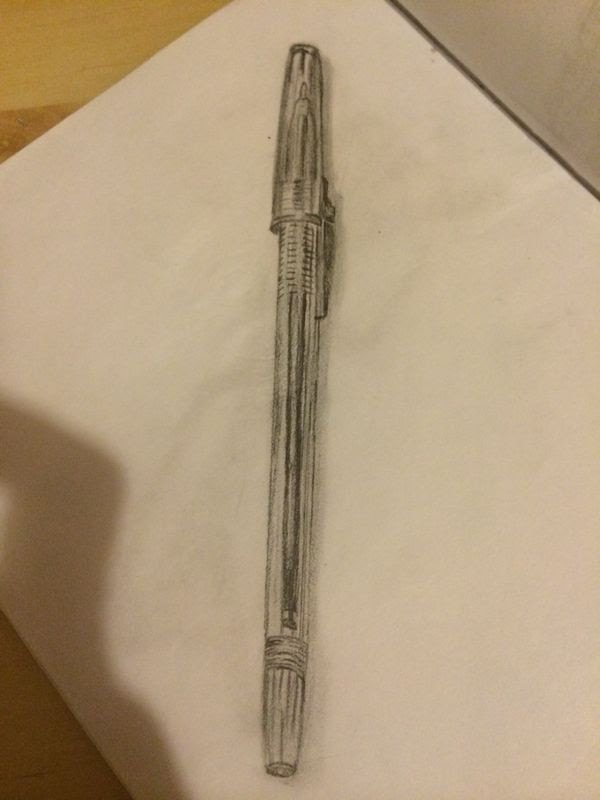Crash course in journalism, lesson 11: interviews
Note: this post is a part of a crash course in journalism. If this is the first post from the series you encountered, it is highly recommended to start the course from the beginning. See index of previous lessons at the end of the post.
This lesson is about interviewing, a fine art that deserves a course by its own. So this lesson is a reference in a nutshell of a big subject. I would like to begin with the one skill that is most important for interviewers, which is being good listeners.
Knowing how to listen, is an important skill in any conversation. Good listeners are much more appreciated by their conversation partners than people who have great rhetorical skills. Good listeners also gain much more from conversations, or as the Dalai Lama once said it: "When you talk, you are only repeating what you already know. But if you listen, you may learn something new”. Listening requires the listener’s full attention, and this is why we naturally identify good listeners. They are the people who hear us trough, and only then think and reply.
Listening is most important for interviewers because interviews are all about what’s the interviewed person has to say. Remember I told you to be careful, not to make the story about yourself? Well, when it comes to interviews, that rule becomes an imperative.
Journalistic interviews are more challenging than other kinds of interviews, because unlike job interviews, for example, they don't have a fixed format. In a job interview, both sides know more or less what to expect while journalistic interviews are many times about revealing the unexpected. It is very important that they will be done in the most informal manner, so that the interviewed person will feel as comfortable as possible.
Unlike what many think, people do want to talk to the press. They do want their side of the story to be published, and you just have to know how to open the door for them. So you have to listen to them, and you have to make the interview feel as close as possible to an open conversation, but you also have to be at the helm, and navigate the interview so that you get the information you want. And while you are trying to balance all that, you also have to take notes and write them in your notebook. So how do you manage? Here are some tips that will help:
Arrive prepared. Know what you want to get from the interview, and know all the relevant facts. Write brief notes of your preparations in your notebook.
Prepare as many questions as possible in advance. The thumb rule is to prepare 2-3 questions for every minute of interview. This may seem like a lot, but remember that you are not going to ask all of them.
Prefer open questions. This is very important. Instead of asking, “Do you think the Brexit is good for the UK, or it is going to be a disaster?”, simply ask, “What do you think about the Brexit?”
Decide on the length of the interview in advance and let the interviewed person know in advance, how long the interview is going to be. This will help both of you to focus.
Try to get as many interferences as possible out of the way. If possible, have the interview done in a quiet place with no audience, if this is not possible (and many times it is not), make sure you have to interviewed person's full attention. Listening sincerely, is the best way to achieve that.
Write notes. If possible, record the interview, but still take notes. Learn how to do that without interfering too much with the interview's flow.
Oh, and one last thing: Some of you may remember Colombo, the sloppy police detective that was played so wonderfully by the late Peter Falk. When interrogating a suspect or a witness, he would often turn back at them after he already said “thank you” and got up to leave, and say, “Oh, and one more question…”. This “at the door question” situation, is where many interviews get to their “Ah ha!” moment. So it is a good idea to get this practice into your interview toolkit.
Index of previous lessons:
Lesson number one: Buy a notebook
Lesson 5: Using your notebook in the field
Lesson 6 : "The something else"

@orenshani7, your post has been chosen by @STEEMNEWS.ONLINE as one of today's promoted posts for its excellent content. We've upvoted, resteemed and published it through Facebook & Twitter.
As the author of a SNO featured article, you've been awarded one TRAIL coin. Please stop by the SteemTrail Discord server to learn more about how to claim your TRAIL coin. You will need an Open Ledger account to do so.
STEEMNEWS.ONLINE is the @SteemTrail for #news and watches the #steemnews tag most closely. Please consider supporting excellent news articles by making steemnews.online one of your operators on Streemian, in addition to steemtrail.
Thank you for your hard work and contribution of excellent content to Steemit.

If you would rather not be promoted by STEEMNEWS.ONLINE, please inform us by replying to this comment and we will honor your request.
Great drivel.
Here is how journalism works "so what if the terror attack was faked, does that mean it didn't happen?"
https://steemit.com/life/@steemtruth/jerusalem-truck-terror-attack-questions-they-can-t-answer-must-see